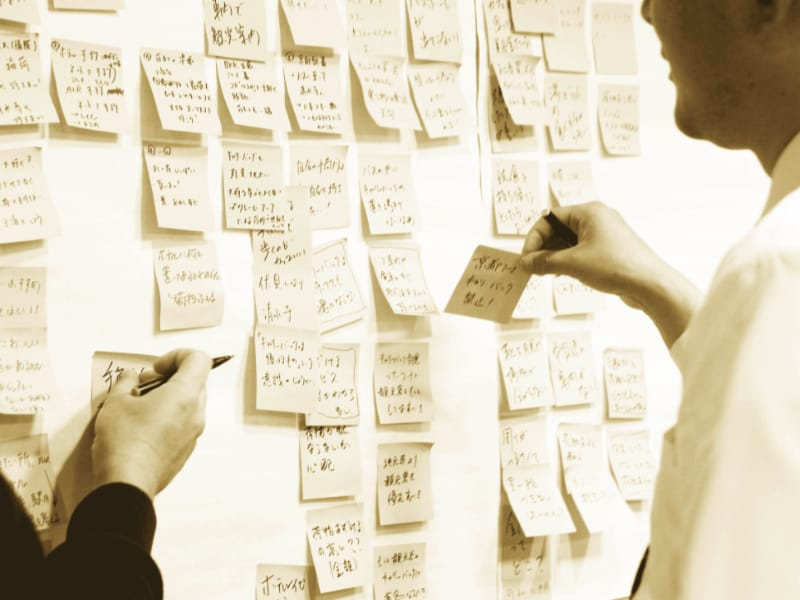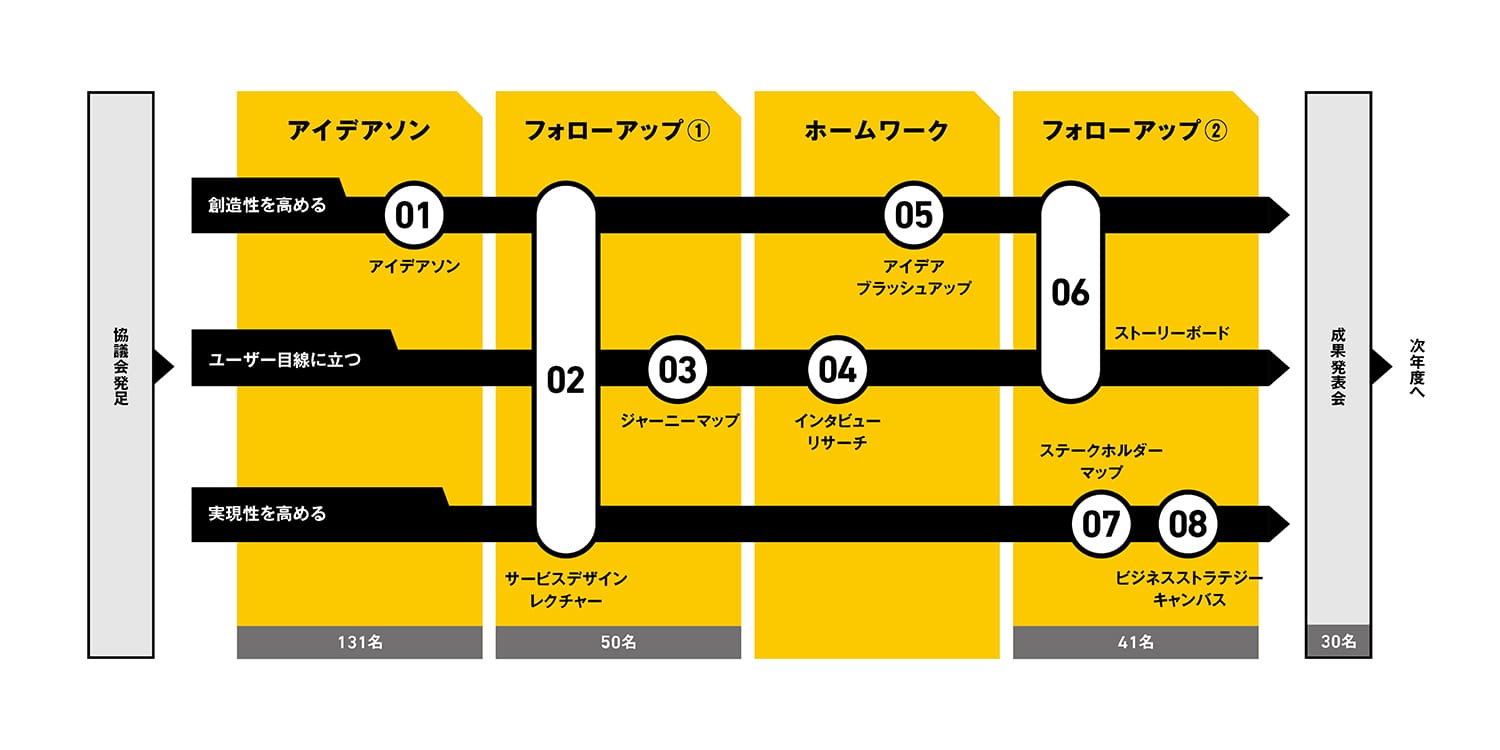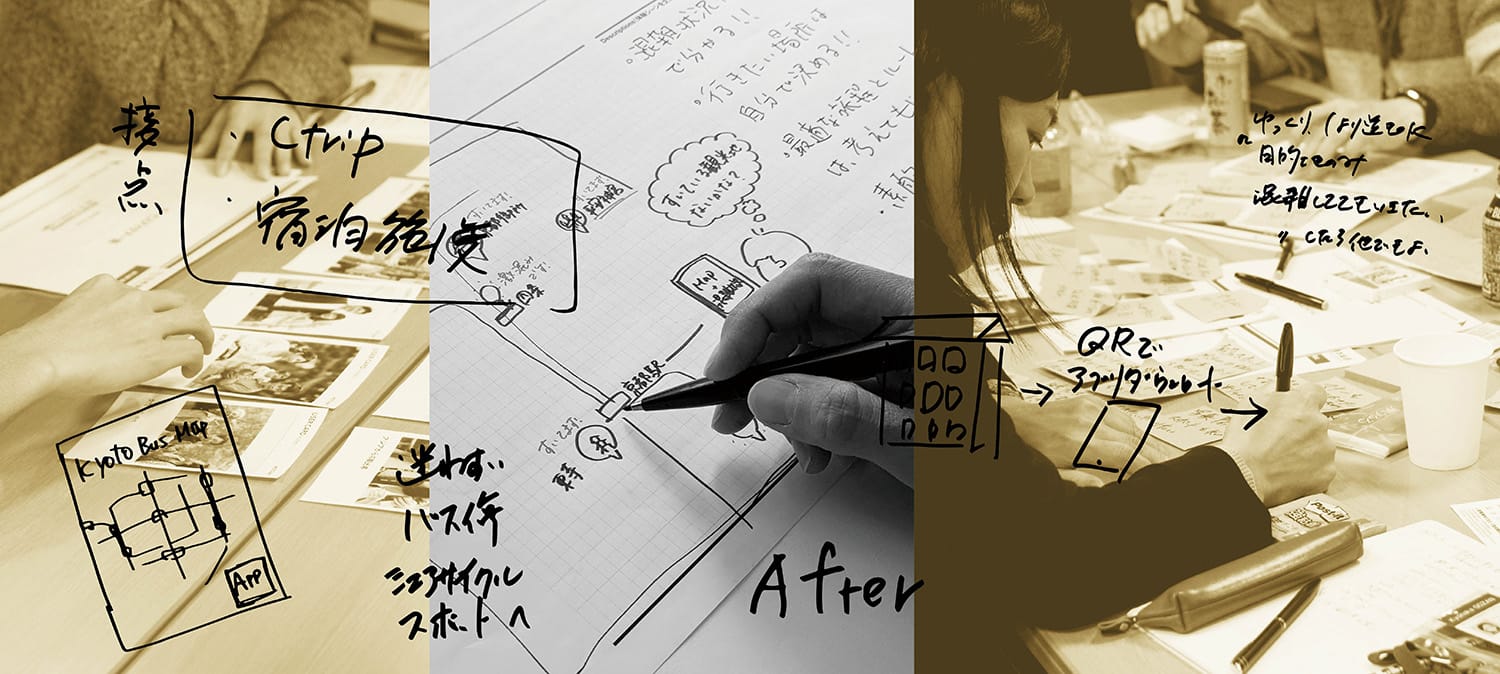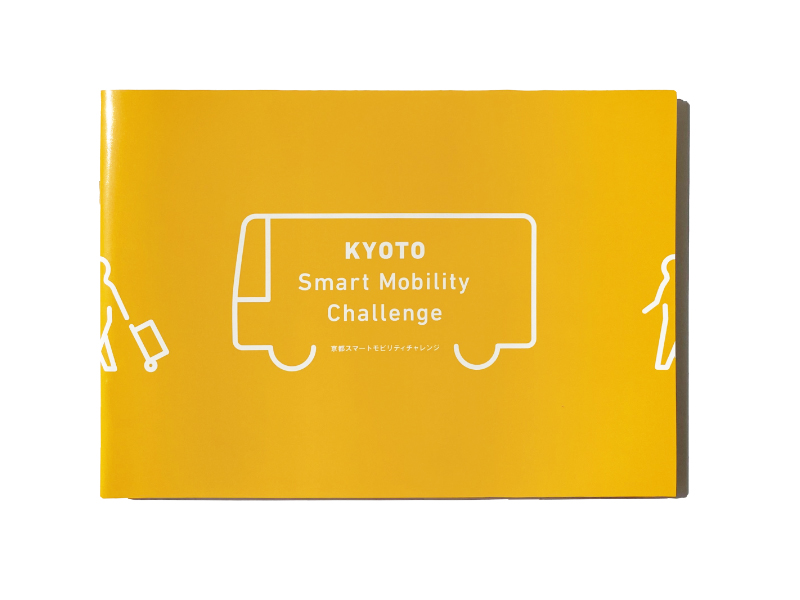Designing tourism to increase the sustainability of the city:
Co-creation of new mobility services
With growing interest in innovation in mobility services through technology, the city of Kyoto is facing near-term challenges in the form of tourist destination and transit facility congestion as a result of overtourism, as well as issues with maintaining transit routes in depopulated regions. The KYOTO Smart Mobility Challenge was a project utilizing open innovation and service design methodologies to resolve issues faced by transit operators and users, as well as explore the next generation of services from the vantage point of users.
ACTANT took part in the process as a member of the secretariat and was responsible for the design and implementation of the core follow-up program. A wide range of players from within and without the city of Kyoto and in the transit space took part in the 2-day program, with an intensive focus on an ideation phase and then a phase towards formulation of strategies for service implementation.
- Category
- CommunityLiving labMobility
- Site/Year
- Kyoto, Kyoto / 2019-2020
- Services
- Living lab / MaaS design / Business design / Experience journey map / Organizational training facilitation
Operating Committee for the Co-Creation Project for New Public Mobility Services in Kyoto
Approach
A focus on residents’ points of view, tourists’ needs, participant creativity, and feasibility:
Incorporating a diversity of perspectives
First, service design was brought to a wider audience through lectures on the subject, priming the pump for the creation of mobility services that would go beyond established confines. Then, based on four core themes derived from existing issues, we conducted group work involving the creation of a journey map and interview research, storyboards, and stakeholder maps, with each team formulating their own ideas. For the final process, we assisted the teams in going beyond ideation on a business model and towards proposals that actively incorporate a pilot trial of these ideas in practice.
By moving between not only a creative process incorporating residents’ ideas, but also a process informed by tourists’ perspectives and a process geared at enhancing feasibility of implementation, we refined the concept in order to ensure that the final ideas for the service had greater precision.


Method
A business design canvas geared towards practical, real-world implementation
We went beyond simply ideation, collaborating with business strategists to develop a unique design canvas geared at real-world implementation of the project. This method involves clarifying, to the minimum extent necessary, the details and systems implicated in the presumed usage contexts and methods of provision of the service, dividing them along the lines of functionality and scope. By incorporating not only the business model, but strategies and roadmaps in this process, it allowed for formulating concrete next steps to take towards a pilot of the project in the next fiscal year.


Result
A collection of service ideas to help make projects long-lasting and viable
This project brought together the diverse knowledge of various participants to create a new form of mobility service. We created a leaflet that summarized the process and activities as a tool for sharing the significance of the project and its results with stakeholders, and translating that to the next initiative.
Concrete suggestions of service ideas were visually featured in an intuitive way, with illustrations showing the use case in a storyboard format. The value provided by the service and the stakeholder maps created were the culmination of our collaboration with each team. Clarifying what steps would be required to practically implement the process allowed for fostering better understanding within participants’ organization and shifting smoothly to the next action in the following fiscal year.

Point
- Utilizing design methods with a view to the coming future of MaaS society while considering ways of incorporating “smart” innovation changes in mobility with diverse touristic activities
- Facilitation that leveraged visual thinking, enabling stakeholders in various fields to move forward with the design process while sharing a unified concept
- Developing new design tools that enable consideration of a project on through to strategic implementation, allowing for a smooth transition towards putting the project in practice